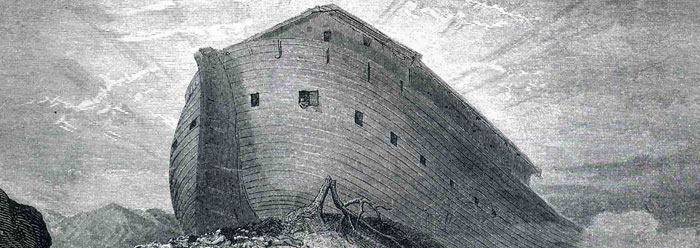Up until fairly recently, nearly all printings of the King James Bible included dates in the marginal notes which helped place Biblical events in their chronological context. Using this as a guide we can see that "God created the heaven and the earth" in 4004 b.c.; the Flood covered the Earth in 2348 b.c.; the Exodus occurred in 1491 b.c.; David became King of Israel in 1056 b.c.; and the Nation of Judah was carried into captivity in 593 b.c. Obviously, the numbers are helpful in understanding the sequence and timing of events, but where did they come from, and are they reliable?
The chronology was derived by Archbishop James Ussher, and first published in a.d. 1650. Born in Ireland, he rose rapidly in the ranks of the Anglican Church, renowned for his scholarship, mastery of Semitic and classical languages, and voluminous knowledge of history. Widely published on many subjects, his most important work was "The Annals of the World," which covered and calendarized all important historical events, beginning at creation and extending to the destruction of Jerusalem in a.d. 70.
In compiling this history, Ussher made use of extensive collections of documents in England and throughout Europe. Some of these were first-hand accounts of events which were never widely circulated and have since disappeared.
His primary interest was Biblical history and how secular events impacted it, but his Annals included much information about early Romans, Greeks, Persians, and Egyptians, which was never published elsewhere. For centuries Annals was a primary source document. Part of his work was a chronology of historical events referenced to Biblical chronology, which he accepted as authoritative.
The Biblical text doesn't always use a linear time-line spanning all of its episodes, but it does give much chronological and sequential information linked to events which we can absolutely date from secular history. Ussher chose the known date of Nebuchadnezzar's death as his starting point, and worked forward and backward from there, using the Biblical data as his infallible guide.
The calculations are not as straightforward in the Bible as one might hope. Thankfully, the Bible gives several large time spans, which bridge the uncertainties.
Actually, the Biblical data are the only reliable data for the Patriarchal periods, as archeological finds are notoriously sparse and vague. On the other hand, adopting the Biblical time scale allows us to understand archaeological remains more completely.
While Ussher had access to documents we no longer have, numerous discoveries have come to light since Ussher, which enhance our understanding. But none of them change his conclusions to any great extent. There have been over 100 attempts to establish a chronology since Ussher, and each one is slightly different, but all are fairly close to his.
Bishop Ussher wrote his Annals in Latin, and a later English translation had numerous weaknesses. Recently ICR colleague Larry Pierce re-translated Ussher's 1600 page tome into modern form, including more recent discoveries as footnotes. Perhaps this new work will re-establish Ussher's chronology as a standard research tool, and for some, restore their confidence in the Biblical record.


























